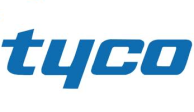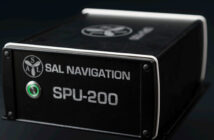
Tyco Integrated Fire and Security, a Tyco company which designs, installs and services fire and electronic security systems for commercial, industrial, residential and government customers, has drawn on its experience and reach in the market to identify the key security trends that will influence the industry in Europe in the coming years.
Global macroeconomic trends such as urbanisation, an increasingly globalised workforce, rising cybercrime, the threat of terrorism and economic uncertainty are putting new strains on society and our security infrastructure. These trends highlight how important it is for organisations to examine their security risks in greater detail and ensure that they protect their people, assets and infrastructure.
“As the security landscape changes the security industry must innovate and adapt to meet the new demands which are placed on organisations,” said Roland Billeter, President Tyco Integrated Fire and Security, Continental Europe. “At the heart of this lies the need to leverage security systems to deliver business insights, achieve regulatory compliance and protect against both internal and external threats. Security systems will be expected to support business continuity initiatives and operational improvement as well as deliver improved security and cost efficiency.”
- The need for interoperable integrated systems will become apparent as traditional standalone systems, unable to exchange information and communicate with each other, prove insufficient and limit organisations’ ability to manage risk and ensure compliance. Levels of integration can vary from the relatively simple integration of multiple security systems to the deployment of a Physical Security Information Management (PSIM) system that integrates an organisation’s disparate security devices and business systems into a single interface.
- The transition from analogue to digital technologies will continue to gather pace. Digital advances such as IP-based connectivity, high definition cameras and digital image processing will allow organisations to monitor and document events in ever greater detail and provide a level of awareness and control that was previously unobtainable.
- The use of video analytics applications will increase and be used in new innovative ways to deliver business intelligence and improve business efficiency beyond the security department. For example video analytics can be used by marketers to view how customers navigate a retail store or by training departments who can assess employee performance against corporate standards.
- We will witness the convergence of Physical and IP-based security. Multiple safety and security systems including video surveillance, intruder detection, access control and fire detection can be integrated with building management systems and logical security applications to be controlled from a central management console. The integration of these systems delivers real-time business intelligence that organisations can act upon.
- Greater focus will be placed by customers on operational efficiency gains and total cost of ownership as they seek to maximise the return on investment in security systems. Legacy systems will need to be integrated into new systems and customers will look for vendors who can deliver global support capabilities, project management expertise and high levels of post-sales service and training.
- To protect sensitive data business will need to deploy robust physical security solutions integrated with IT security solutions that will mitigate the risk of theft or accidental loss of confidential or personal data held on a multitude of devices, from laptops and smartphones to portable memory sticks.
- Organised crime will continue to be a major concern throughout the supply chain. New distribution channels, cross border mobility and easy monetisation are all contributing to the increase in theft by organised criminal gangs. Technologies such as access control, HD CCTV and Automatic Number Plate Recognition (ANPR) will all be deployed to combat this threat.





